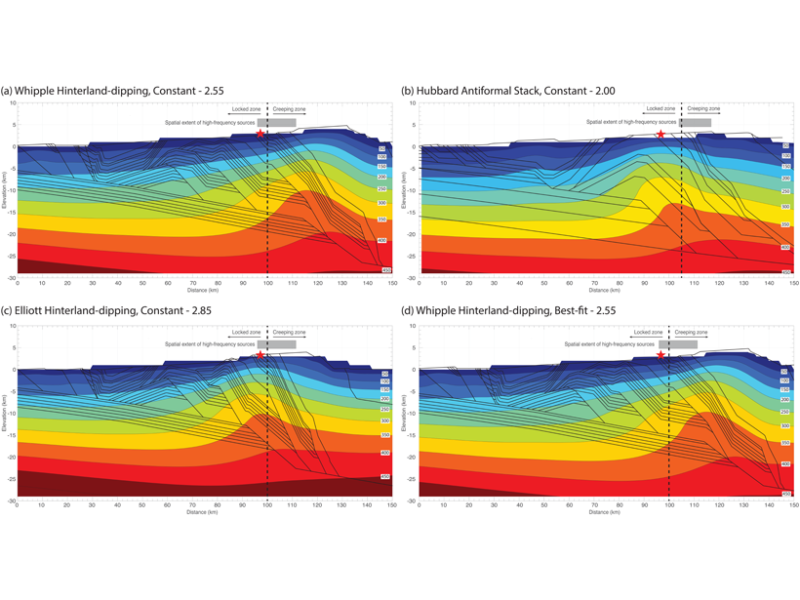9.14.20
Taylor Schildgen
tschild@uni-potsdam.de
A new study that combines constraints from the 2015 Gorkha earthquake, forward models of deforming crust, and thermochronology data gives new insights into the structure of the Himalaya.

Different proposed models of the structure within the Himalaya have different associated thermal fields (colored-coded above). Using thermochronology data, together with forward models of the evolution of these structures through time, it is possible to assess which of these complex pictures most likely captures the true structural complexity of the Himalaya. Credit: Ghoshal et al. [2020], Figure 12.
The geometry of major faults accommodating deformation in the Himalaya has been the focus of substantial investigative efforts and considerable debate for more than 20 years. The 2015 Gorkha earthquake provided valuable insights into the geometry of the Main Himalayan Thrust, the primary décollement underlying much of the deformed region, but details of the deformation above that structure, the geometry of the décollement farther afield from the rupture zone, and how the deformation has evolved through time have remained poorly constrained.
Ghoshal et al. Techtonics[2020] address this problem by testing four main hypothesized geometries of deformation with thermokinematic modeling and an extensive set of both new and previously published thermochronology data. This type of data records the cooling history of rocks as they are exhumed to the surface, hence it is well suited to studying crustal deformation.
This general approach of combining thermochronology data with thermokinematic modeling has been used to investigate crustal deformation with simple geometries in many mountain belts. The novel aspect of this study is that the authors interpret their data in the context of the complex pattern deformation that has been readily observed and mapped in the field, and how the structures have evolved through time.
While this approach of engaging with realistic levels of complexity limits the number of main hypotheses that can be tested, the authors present a clear picture of what aspects of the overall geometry of deformation can be discerned, what aspects remain unconstrained, and how the results can better inform our understanding of the timing and rates at which individual structures formed.
See the full article here .
five-ways-keep-your-child-safe-school-shootings
Please help promote STEM in your local schools.
Eos is the leading source for trustworthy news and perspectives about the Earth and space sciences and their impact. Its namesake is Eos, the Greek goddess of the dawn, who represents the light shed on understanding our planet and its environment in space by the Earth and space sciences.

